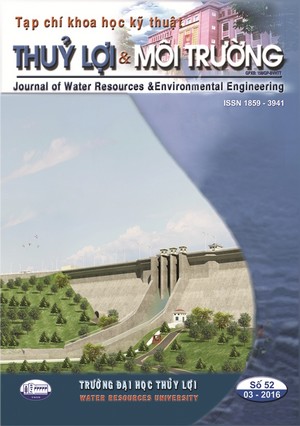Denaturing the activated charcoal that are produced from the agricultural waste to be as an absorbent material in treating Ammonium in water
Abstract
Producing the activated charcoal (AC) from the agricultural waste (groundnut shell, stem of cassava tree) does not only bring the economic efficiency but also contribute solving the environmental problems due to the agricultural waste. This paper presents the findings on the production of activated charcoal from the groundnut shell and the stem of cassave tree with the found optimal conditions such as: Denatured chemical ZnCl2 2M, charring at temperature of 350oC within 60 minutes, then activation of the groundnut shell char at 450oC, of the cassava tree stem at 500oC within the same time of 60 minutes. The optained activated charcoals are able to remove the colour of the synthetic dye sample with the treatment efficiency from 89-96%. After being activated, the specific surface area of produced AC is bigger, up to 750m2/g for the groundnut shell charcoal and 1215,56 m2/g for the cassava tree stem one. Besides, the cassava tree stem charcoal is qualified by examining the ability in absorbing ammonium in water. The results showed that the maximum ammonium absorption capaccity of the cassava tree stem charcoal reaches to the value of 6,9735mg/g which is higher than that of bamboo AC (having maximum ammonium absorption capaccity of 5,9172mg/g) and little smaller than that of the cocunut AC (7,4394 mg/g) that are used in the market.

